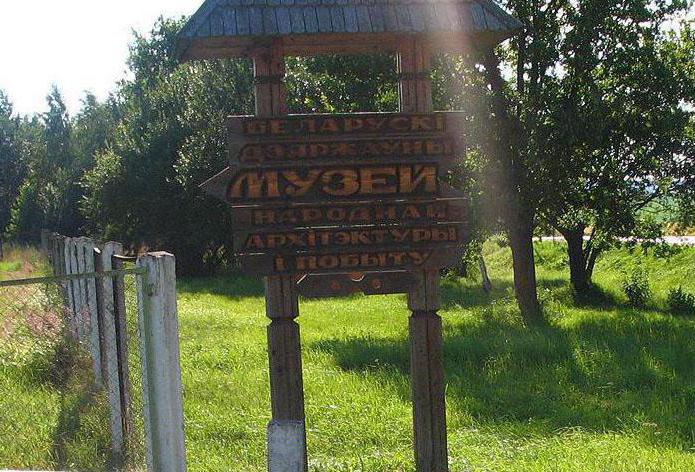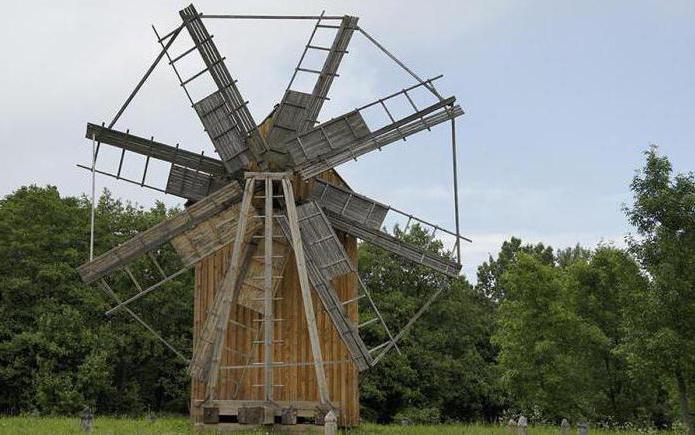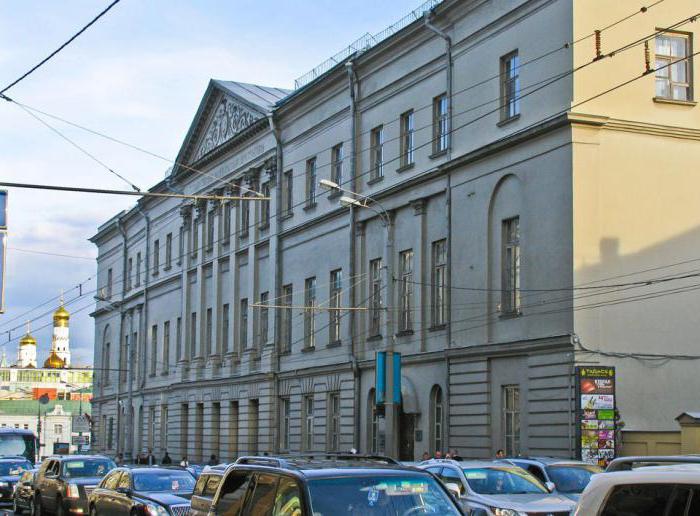Belarusian State Museum of Folk Architecture and Life, Strochitsy. Expositions of the museum
In 1976, the Supreme Soviet of the Belorussian SSR issueda decree, thanks to which the Museum of Folk Architecture and Life (Strochitsy) was established. Since that moment the work has begun to boil, and it does not stop to this day. On the territory of the museum there are so many collected monuments of landscape evolution, geological history including, since this blessed place is located in the middle of the Minsk Upland, almost at the highest point above sea level from all that is in the Republic.

Job
In the museum complex, as already mentioned,work has been boiling for more than a dozen years, never stopping for a day. It includes not only exposition, but also industrial, economic, security zones, facilities that require permanent engineering support, roads within the museum zone, stretching for huge distances. And all this requires not only constant supervision, but also improvement, replenishment with new discovered monuments.
In addition, it is necessary and extensive scientific work,equipment of expeditions to the regions of the Republic in order to study the material, carry out searches, fixation and transportation of discovered monuments of everyday objects, as well as samples of ancient architecture, crafts and crafts. And very often come across monuments of great importance, which lovingly obihazhivaet Museum of Folk Architecture and Life. Strochitsa is not the only location of the complex. Just an old village, located in this area, gave the museum a name.

Territory
The Ministry of Culture of the Republic of Belarus still cherishesThe State Museum, which for forty years has been demonstrating traditional monuments of wooden architecture, which the Belarusian people created in the seventeenth, eighteenth and nineteenth centuries. Especially many care needs to preserve the natural environment, because these monuments are in the open.
Common territory, where the Museum of the People'sarchitecture and life (Strochitsy) is two hundred and twenty hectares. It is located very near the capital (four kilometers), where the rivers Menka and Ptich flow. The whole area of the museum is divided into several sectors: "Poozer", "Dnieper", "Central Belarus" and others. Each of them presents a holistic picture typical for the above historical period of development, with all its characteristic regional features.

Monuments
Now the exposition of the museum presents thirtyfive monuments of folk architecture created by the Belarusian people during the period from the end of the seventeenth to the beginning of the twentieth century. These are religious buildings (belfries, churches, chapels), public buildings (public school, public barn), industrial buildings (mills, smithy) and large complexes of manor architecture. An ordinary house with outbuildings can tell a lot about the peasant life of this period.
Everywhere the painstakingly restored traditionalinteriors, great attention was paid to small architectural forms that give an end to each exposition sector: wells, fences of various types and green spaces. The Museum of Folk Architecture and Life (Strochitsy) has the status of the custodian of historical and cultural values of the second category, which are brought by the state to the appropriate list of the republican level. In total, the museum's collections contain more than twenty-three thousand units of storage.
Whole country
Minsk district, which has given part of its territory(just behind the automobile market "Koltsovo") to the museum, greatly benefited from this step. Expositions are visited by thousands of tourists who want to get acquainted with the history of Belarus. Here are collected almost all examples of folk wooden architecture from each region of the Republic. Churches, mills, barns, huts, a tavern - everything authentic, the present was at various times found and carefully transported here from all corners of the country.
Collected exhibits carry nostyle raznogolositsy, because they are connected in one place thoughtfully, resourcefully and expediently. The Skansen (open-air museums) is a fairly common phenomenon in the world, but in Belarus it is one that bears the image of the whole country. Visitors dive headlong into this expanse, through the Belarusian national architecture, learning the immense depths of the soul of the creative people.
This idea, which embodied the creators of the museum,proved to be fertile, and for sure it will continue to connect the generations from the cradle of folk art up to the unnamed times. Minsk district cordially accepts guests: it suits everyone comfortably, deliciously feeds, entertains. And all this is quite inexpensive.

Exhibits
Some of the monuments of the thirty-fivecontains a museum, from time to time are on restoration, and the Ministry of Culture of the Republic of Belarus takes an active part in solving such problems. The main thing is that at any time the life of the Belarusian village is presented in an exhaustive way, tourists inspect the exhibits, they have an integral impression of the old times. This is facilitated by the diversity of the monuments represented: household items in the tavern and the Uniate Church, in the school and the batley theater, closed peasant households and the old mill - everywhere the life has been transmitted fully and reliably.
Narrow rural streets seem to lead the visitorto the gilded domes of the Intercession Church of the eighteenth century, which tend to seem to pierce the heavens. This temple is active, attractive for parishioners, and for visitors by its beauty and bylaws.
Further, tourists will certainly go through museumspeasant households, they will go ashore, where they will be met by a windmill old mill, brought from the Khotim district, and then they will see another magnificent church - the Transfiguration Church. The Belarusian State Museum of Folk Architecture and Life offers modern exhibitions: "Belarusian flax", "Beekeeping of Belarus", "Vehicles", "Zabrodstkiie tackle" and others.

New areas
Skanseny better than other museum forms showhistory and everyday features of each of its segments in the most natural conditions. At first, it seems to visitors that the village in which they found themselves is quite inhabited, it's just that the owners of these houses are now somewhere far away in the field, and later in the evening they will grind speech on these streets, creak well, pets will vote. Literally, all subjects meet tourists as if they are waiting for the owners to return.
Historical and ethnographic sectors in their own waythe relief is very close to the natural conditions of the locality they represent. Lakes, Western Polessye and Eastern, Ponemane somehow found almost a mirror image of the landscapes in two hundred and twenty hectares of the metropolitan suburbs.
There are also environmentallandscape zone (on the floodplain of the river Ptich). All the structures are genuine, transferred here from different parts of the Republic: they were carefully disassembled on site, then carefully transported and, under the guidance of specialists, again mounted on the territory of the museum.

Stringers
Minsk is a beautiful European city, in whichthere is something to see the tourists. But nevertheless a huge part of travelers strive to touch the primordially popular historical reality, walk along the rural streets of the eighteenth century, visit wooden churches, Belarusian huts, see how the mill works, sit at a school desk two centuries old. In a word, the old village of Strochitsa attracts them far away from the capital.
Most of all people are attracted to unique andperfectly preserved or talentedly restored everyday objects, which came from the hands of folk craftsmen who knew their craft well. Furniture, utensils, household equipment is still able to serve its purpose, and home furnishings, shoes, clothes, ornaments are impressive with whimsical patterns of embroideries, stitching, hemming, homemade lace.
The ninth century
Ancient settlement on the river Menka - the most uniquean archaeological monument that arose before our era, whence the city of Minsk appeared many centuries later. Here, on the museum territory, there are several graves in the barrows, which scientists date to about the ninth century.
Ethnographic Museum constantly conducts lectures,arranges folk festivals, colorful festivals, national handicraft master classes. These days, every tourist can try himself as a Belarusian peasant, spinner, artisan. Also here treat delicious dishes of national cuisine. The history and culture are combined with the settlement, the museum life is enriched, the grateful tourists write reviews.
Excursions
Very popular excursions that coverpeople of any age: "Folk Weaving", "People's Architecture", "Interior of Economic Buildings", "Meet Odeska", "Magic Kufar", "Kolosok" and many others. Also works and exhibitions, especially interesting "Windmills". The transport highway Moscow-Brest, known since the tenth century under other names, connects Strochitsy with museums in Priluki, Zaslavl, Ratomka.
Scientific employees from the cultural, educational,scientific-fund, scientific-exposition departments willingly serve those who wish, leaving their memories of this wonderful excursion for life. Interactive elements widely used in the course of excursions, correlated with the nature and theme of the event, in many scenarios there are reconstructions of Belarusian folk rites.

Most Popular
"Central Belarus" - an hour and a halfexcursion, which introduces the architecture, way of life, culture of this historical and ethnographic region, considers the traditional planning of the village with the center of social and cultural needs of the people: the church, the tavern, the school, as well as the production, economic and residential needs. The interiors are completely restored everywhere, which allows museum workers to arrange for tourists the themes of Easter or Christmas carols.
"Dnieper" - an hour excursion, whichconsiders the peculiarities of architecture, culture, life of the inhabitants of this region of the late nineteenth century: traditions in the planning of the village, special wreaths, Dubrovin ceramics, the Chausa people's order.
"Poozerye" - an hour and a half excursion,considering the features of the layout: unconnected buildings, enclosed courtyards with clearly separated territory, farm buildings of the nineteenth century. Windmill ancient mill is especially interesting, in people it was called "fingerprint". Now in other places in Belarus such buildings can not be found, and nowhere, probably. Its architectural appearance is very expressive: twin wings with an independent turn, which seem to "smell" where the wind blows, and turn when changing its direction.
</ p>




